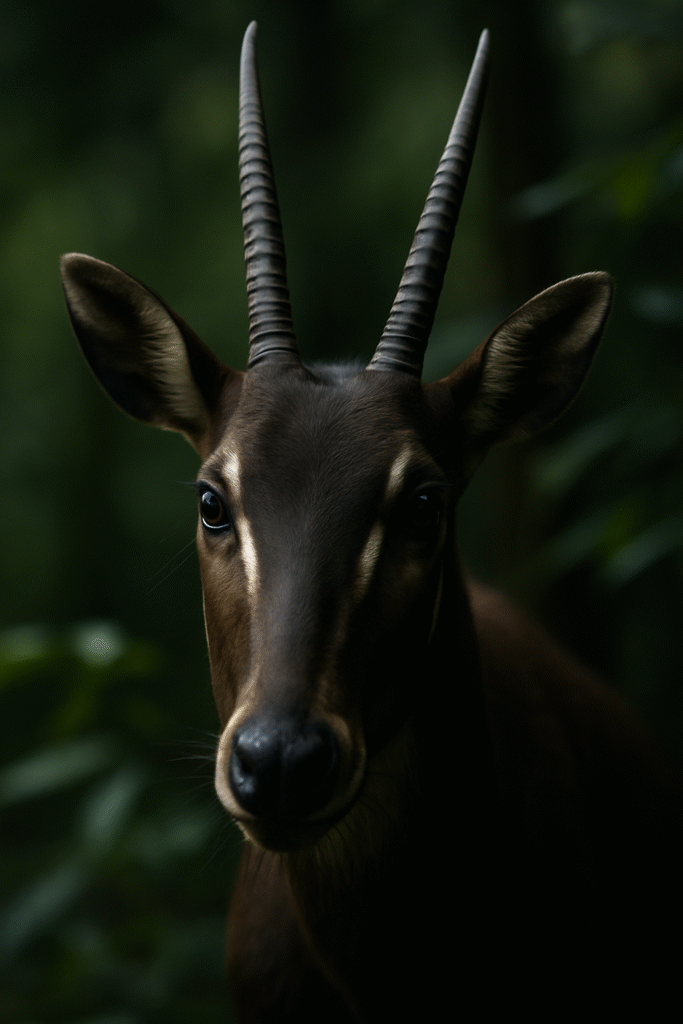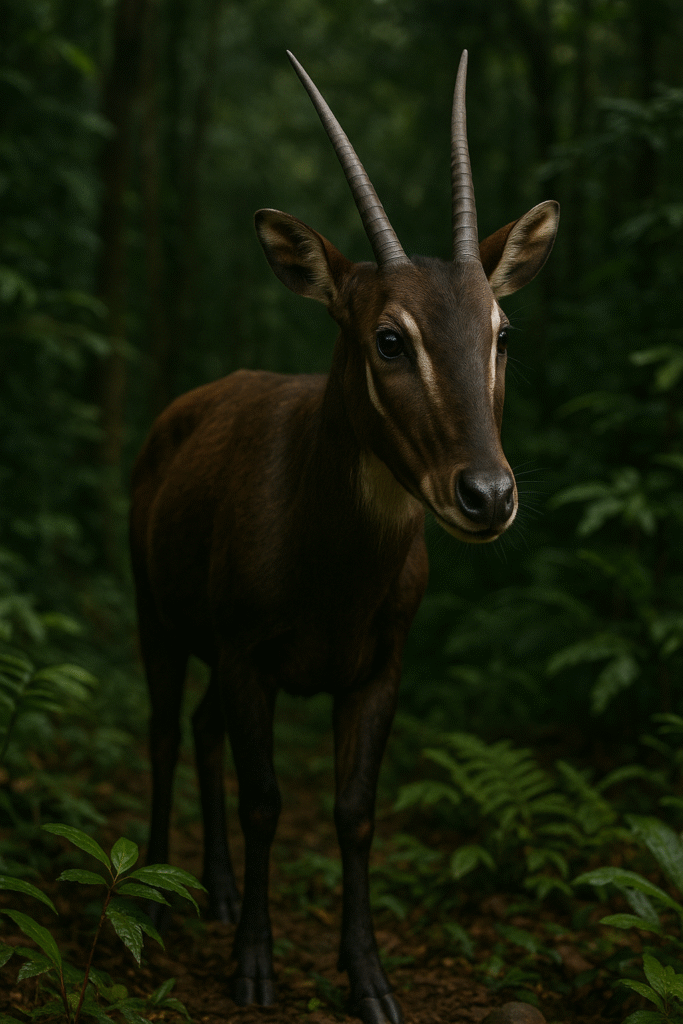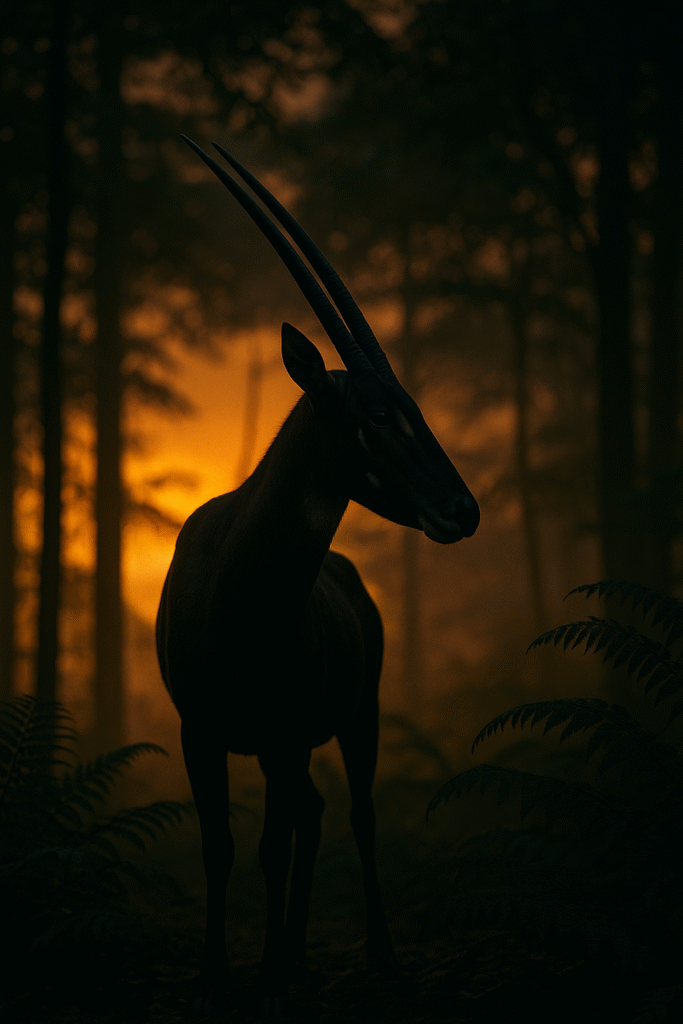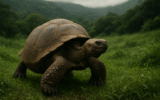In the deep emerald folds of the Annamite Mountains — a rugged spine straddling Laos and Vietnam — there exists an animal so rare, so hidden, that it borders on myth. The Saola (Pseudoryx nghetinhensis), nicknamed the Asian Unicorn, is one of the most elusive large mammals on Earth. To glimpse one is to glimpse a secret, a flicker of life from the shadows of an ancient forest.

A Creature Born of Mist and Mountain
Discovered by science only in 1992, the Saola is not a product of modern myth but of biological astonishment. For centuries, local villagers knew of its presence — its twin horns sometimes mounted as talismans, its image whispered in stories. Yet the wider world remained unaware until biologists found a set of strange horns in a hunter’s home. Unlike anything they had catalogued, they belonged to a species no one had formally seen alive.
The Saola’s body is delicate yet resilient: slender, deer-like, with a dark brown coat that catches the forest light in bronze hues. Its most striking feature is its pair of parallel, gently curving horns — sharp, smooth, and perfectly symmetrical. Both males and females bear them, like guardians of an untold lineage.
The Phantom of the Annamites
Few scientists can claim to have seen a Saola in the wild. Camera traps, brief encounters, and tales from villagers form the bulk of its record. It is an animal that rejects captivity — every attempt to hold one has ended in tragedy, the Saola withering within weeks, as if the forest itself were its breath. This unwillingness to live beyond its native realm has made it a symbol of wild purity, a spirit bound to its land.
A Vanishing Lineage
Though often compared to antelopes, the Saola is unique, belonging to its own genus. Its evolutionary history diverged millions of years ago, making it a living relic of a vanished age. Biologists call it a “conservation jewel” — an animal whose survival represents not just one species, but an entire ecosystem of which it is the keystone.

It grazes quietly on tender shoots, ferns, and fig leaves, rarely disturbing the silence. Solitary, shy, and gentle, it embodies a paradox: so physically present, yet so absent from human experience.
The Edge of Extinction
Estimates suggest only a few hundred — perhaps fewer than 100 — remain. The Saola is ensnared not by targeted hunting, but by snares meant for other animals. Across the Annamites, miles of wire traps litter the forest floor, invisible to the Saola until it is too late. Habitat fragmentation, too, slices away the corridors it once roamed freely.
Conservationists call it a race against time. Unlike other charismatic species, the Saola lacks the photographic familiarity that compels global campaigns. To many, it exists only as a rumor — and how does one rally to save what one has never seen? Yet international alliances, local forest guards, and indigenous knowledge are converging to offer it a chance.
A Living Myth
For the Lao and Vietnamese highland peoples, the Saola has always been more than flesh and blood. It is a symbol of mystery, purity, and the unseen forces of the forest. In a world where nature is often reduced to resources, the Saola stands as a reminder: there are lives still beyond our grasp, creatures that demand reverence before comprehension.

Its nickname, the Asian Unicorn, is misleading only if one expects fantasy. For those who know the mountains, its existence is proof that wonder is real — and fragile.
What the Saola Teaches Us
The Saola’s story is not only about rarity, but about humility. It asks us:
- Can we protect what we do not know fully?
- Can we value mystery, even when it cannot be displayed in a zoo or captured in photographs?
- Can we honor the wild for being wild, untouchable, and free?
In many ways, the Saola is a mirror to humanity. Its horns, elegant and eternal, point skyward as if marking a path toward balance. Its silence warns us of fragility. And its refusal to live in captivity shows that not all things can be tamed, nor should they be.
Epilogue: A Unicorn in the Trees
As the world hurries forward, the Saola lingers in its mountains, slipping between shadow and fern. To save it is to save a piece of the Earth’s imagination, a reminder that our planet still holds secrets worth guarding. If it disappears, we will not only lose an animal, but a story — one of the last great myths still breathing among us.


Reply